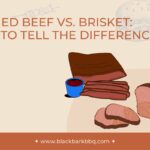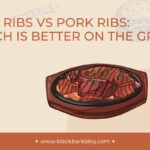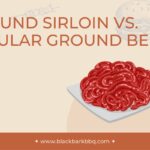It may be tough to choose the correct steak cut when there are so many options available. How do you choose the greatest cut, from Porterhouse to Ribeye and beyond?
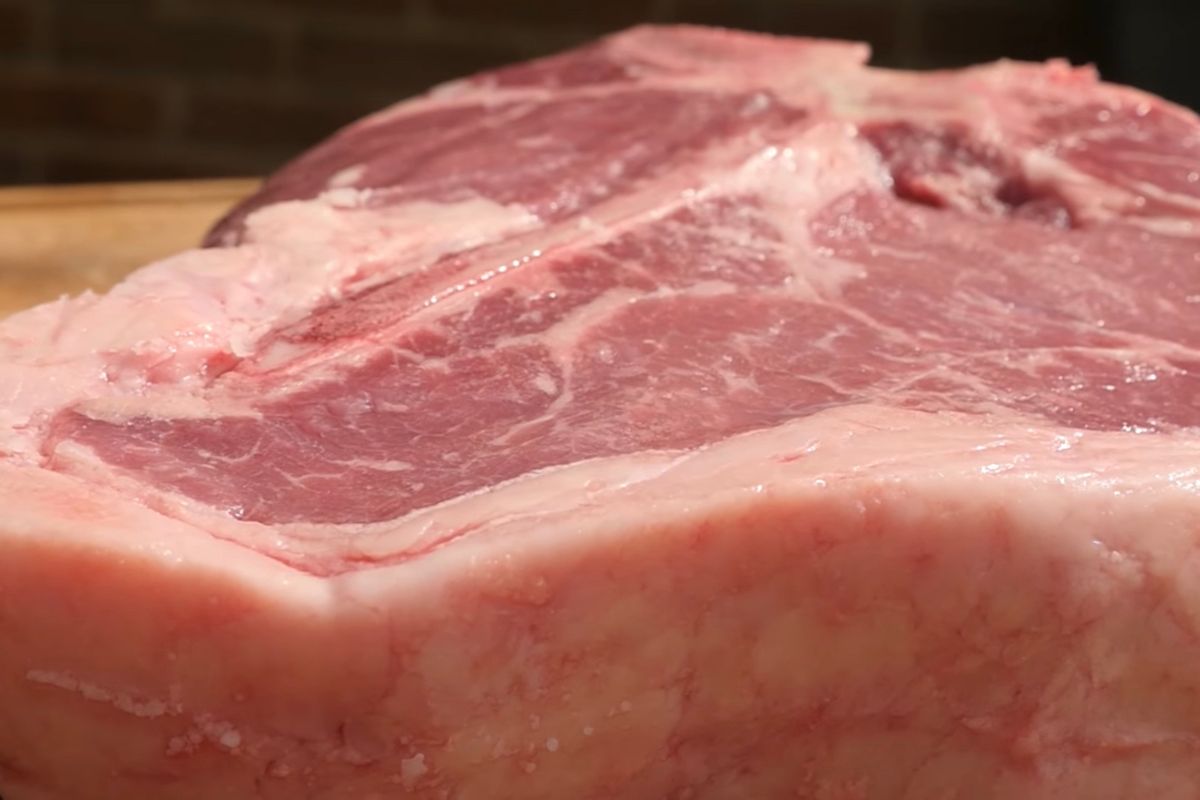
Despite the fact that Porterhouse and Ribeye are the two most popular steak cuts, steak enthusiasts continue to fight about which is best.
Both are equivalent in terms of protein content, quality, and flavor, but they also have distinctions.
Understanding the variations in cuts, cooking techniques, and costs is crucial for making a selection.
To aid you in determining which beef cut to buy at a restaurant, butcher, or online, we have produced a comparison between porterhouse and ribeye.
What Is Porterhouse Steak?
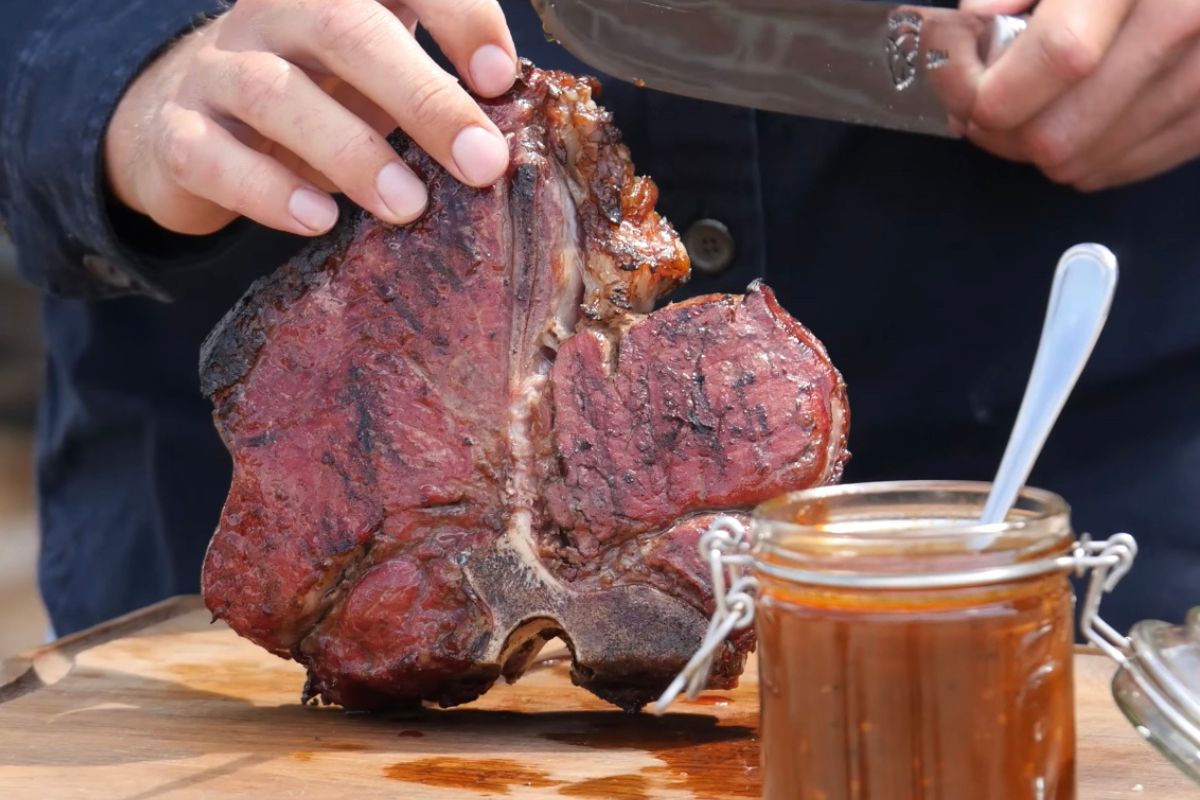
The first possibility is the Porterhouse Steak, a combination of the upper loin and tenderloin.
If you remove the bone and steaks from a Porterhouse, you will be left with a top loin (also known as the New York strip) and a Tenderloin steak.
The king of steakhouses, the porterhouse, may weigh up to two pounds. In restaurants, it is often served as a meal for two, so if you order one, expect a hefty portion.
A Porterhouse steak may be offered either sliced or whole, depending on the individual’s desire.
It is a challenge for meat lovers with a huge appetite, but when halved, it is the perfect dinner to fulfill your hunger.
Similar to other kinds of beef, Porterhouse steak is an excellent source of protein, iron, B vitamins, and zinc. It is tender and meaty, with a flavor reminiscent of both the loin and the fillet.
This quality steak is sourced from the short loin primal, the first primal behind the cow’s center.
On one side of a porterhouse’s bone is a tenderloin steak, while the other side includes a top loin, sirloin, or New York strip steak.
The upper loin is the smaller of the two sections by a substantial margin. If the steak was cut near the tenderloin, the loin section maybe a fillet mignon. Bonus!
The bone separating the two sections is a fragment of the lumbar vertebrae, which are the spinal vertebrae that run between the rear of the rib cage and the pelvis.
What Is Ribeye Steak?
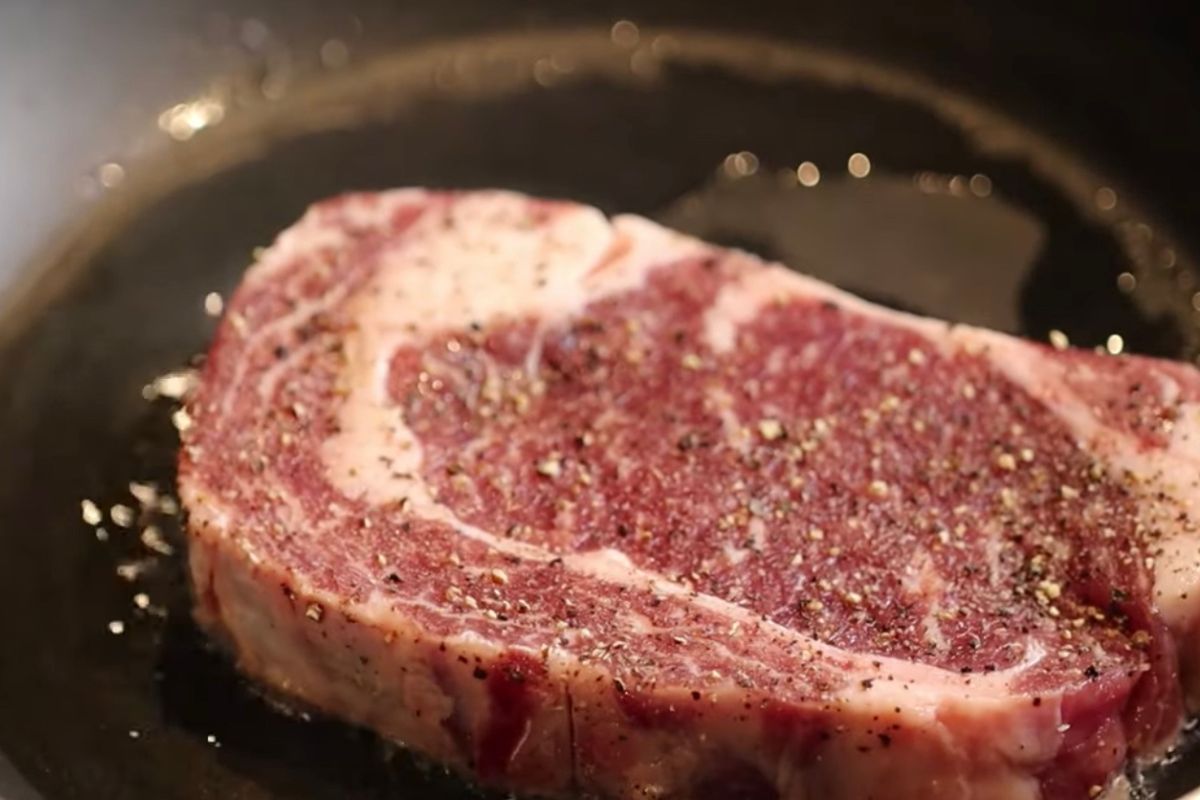
Ribeye is a primal cut from the rib and one of the best types of steak. It is also referred to as beauty steak and is recognized for its tenderness, robust flavor, and ideal fat content.
Depending on one’s taste, ribeye steaks may be bone-in or boneless. The flavor and moisture contributed by the bone may extend the cooking time.
Bone-in meat cooks more slowly; by the time your steak becomes medium-rare, other pieces may still be rare.
Ribeye without bones is easier to cook and has the same flavor as Ribeye with bones.
A Ribeye steak has around 11 grams of fat and 80 grams of cholesterol. Moreover, it is rich in protein, selenium, zinc, phosphorus, and B vitamins.
The flavor of a well-marbled Ribeye steak comes from its fat content. This is one of the most tender steaks available, so you can expect a buttery and tender meal.
The center region has a usually smooth texture, but the Ribeye cap has a larger fat content and a coarser grain.
The shape of a boneless ribeye steak ranges between an elongated oval and a rounded rectangle. If the bone is still connected, the meat is a rib steak.
They are a gorgeous shade of dark crimson but contain a significant amount of marbling and some really deep fat intrusions.
If you’re fortunate, your ribeye may arrive with the rib cap, a particularly delicious and tender piece of meat that is separated from the main portion of the cut by a fat wedge.
Typically, a ribeye weighs roughly 10 ounces, however, it may weigh twice as much. There are other thicknesses available, but 1.25 inches is an acceptable starting point, with 1.5 to 2 inches being optimal.
Unsurprisingly, a ribeye is formed from the rib primal, which is the first primal portion placed in front of the cow’s midsection.
Between ribs 6 and 12, they are cut from the highest section of the ribs. In close proximity is the prime rib cut.
Which Is The Better Steak?
Appearance
Both steaks come from the same area of the animal, therefore their beginnings are somewhat similar.
However, we can all agree that Porterhouse and Ribeye may be distinguished visually.
The makeup of the skeleton is the most influential factor in determining appearance. Ribeye steak often has one or no external bone.
Comparable to the T-bone, the Porterhouse features a massive central bone. Because the bone is often in the shape of a T, many people mistake it for a T-bone steak.
Fat Content
Another notable difference between Porterhouse and Ribeye is their fat level.
Despite the fact that both slices are sourced from the same part of the calf, their fat content differs due to their distinct locations.
The positioning of Porterhouse and Ribeye impacts the quantity of fat due to the muscular movements that occur when a cow utilizes its muscles.
Ribeye steak has a beefier flavor owing to its high-fat content, but Porterhouse steak has two softness characteristics because of its various cuts.
As marbling, the fat covers both edges of the flesh.
Flavor
Each side of the Porterhouse steak is delectable. Although some assert that the strip is more flavorful than the loin side, all meat connoisseurs agree that both cuts are delicious.
Unlike the Ribeye steak, however, they are unsuccessful. Porterhouse is not as tasty as Ribeye.
Due to the combination of fat, marbling, and softness, the flavor is succulent and meaty.
In terms of tenderness, the Porterhouse steak is similar to the fillet mignon and the majority of beef cuts.
Typically, the strip side is more tender, but Porterhouse’s premium side is significantly more tender.
Moreover, the Ribeye is a delicate cut. This steak is very tender and has a pleasant flavor thanks to its marbling.
Cost
Prices for Porterhouse and Ribeye steaks vary. According to figures from the Department of Agriculture and the National Retail Report for beef, however, the average price for both cuts is the same.
According to a number of studies, a boneless Ribeye steak costs between $14 and $15 per pound (the price is not fixed, and you may find it more or less expensive).
Ribeye steaks with bones cost between $13 and $14 a pound less. For larger cuts, you should expect to pay an additional $20 per pound.
The price of a Porterhouse may vary based on the size of the bone that is often included with it. Porterhouse steaks cost around $12 per pound less than Ribeye steaks.
Due to its high-fat content and powerful flavor, Ribeye is often preferred by home cooks and chefs.
Cooking
Grilling, pan-frying, and broiling are recommended cooking techniques for Ribeye. All three cooking methods will provide a succulent steak.
However, flare-ups may make grilling challenging for certain persons.
When preparing a Ribeye steak, the majority of people prefer pan-frying.
Broiling and grilling are the most typical cooking methods for a porterhouse. Due to its shape and bone, it is challenging to pan-fry.
Given the center bone, Porterhouse steaks generally need five more minutes per side than Ribeye steaks.
Final Thoughts
The dispute between Porterhouse and Ribeye has been addressed, right? This is a difficult decision, and we understand why. Both steaks are tasty, easy to make, and nutrient-dense.
The key variations are the size of the bones and the amount of fat, so you may select which one to add to your lunch menu today depending on your own tastes.
If you want grilled steak, the Porterhouse is an excellent option. If pan-frying is your preferred cooking method, the Ribeye is the preferable alternative.
- Porterhouse Vs. Ribeye - May 16, 2022
- How Long To Smoke A Brisket Per Pound – Explained - May 16, 2022
- What Is A Tomahawk Steak? - May 16, 2022


